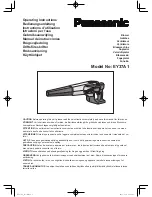
5-15. ALC ADJUSTMENTS (Cont’d)
Table 5-7.
Selected Values of Low Band Temperature Compensation Resistors in A25
RVL (Ohms)
A25R109 (Ohms)
A25R1 15 (Ohms)
800-870
3830
9090
870-950
3480
8250
950-1050
3160
7500
1050-1160
2870
6810
1160-1270
2370
6190
1270-1380
2150
5620
1380-1490
1960
5110
1490-1600
1620
4640
ALC ADJUSTMENTS
Description
The ALC detectors have a linear region. Below the linear region the detector response is non-linear.
The ALC circuit attempts to compensate for the non-linear regions such that the overall response of
the ALC loop is linear over a 40 dB range from —20 dBin to 1-20 dBm. Since there is a separate
detector and modulator for the high bands (Bands 1
-
4) and low band (Band 0), there are separate
adjustments for the high bands and low band.
The OUT is set to a CW frequency within the band to be adjusted. The RF attenuator and ALC is set for
de-coupled operation (controlled separately). The RF output level is set using the ENTRY keys. The
power is measured with a power meter and if necessary adjustments are made until the power meter
indication is correct at each OUT power level.
Equipment
Power Meter
HP 436A
Power Sensor
HP 8485A
Digital Voltmeter (DVM)
HP 3456A
Power Supply
HP 6294A
Adapters
APC 3.5
(f) To Type N
(in)
(8341B only)
HP P/N 1250-1744
APC 3.5 (f) To APC 3.5
(f) (8340B only)
HP P/N 5061-5311
NOTE
The ALC circuit contains several adjustment controls and the
adjustment includes changing calibration constants stored in memory.
All of the adjustments in each band interact with each other. In addition,
the high band 0 dBm adjustment affects the low band, and the high
bands +18 dBm adjustment affects the low band. Before making any
adjustments, check the operation of the ALC circuit as described below
and make adjustments only if necessary.
NOTE
In the following procedures, do not put P.C. boards on extender boards.
5-92
Adjustments
HP 8340B/41B
















































